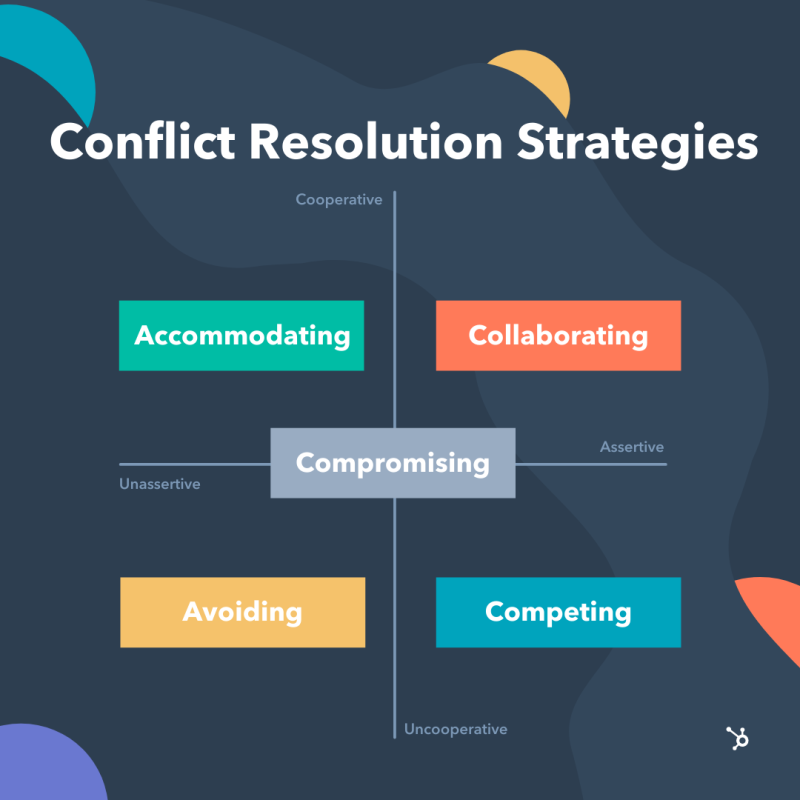Conflict Resolution Strategies for Women in the Workplace : How to Handle Difficult Situations Subtitle: Effective Tips for Resolving Conflicts and Building Strong Relationships
Introduction:
Conflict is an inevitable part of any workplace, and it can be especially challenging for women. As women, we face unique obstacles in the workplace, from gender biases to communication barriers. However, by developing effective conflict resolution strategies, we can overcome these challenges and build stronger relationships with our colleagues.
In this article, we will explore some of the best conflict resolution strategies for women in the workplace, with practical tips and real-world examples.
Section 1: Understand the Roots of Conflict
Before we can effectively resolve conflicts, we need to understand the root causes. In many cases, workplace conflicts stem from communication breakdowns or misunderstandings. By identifying the underlying issues, we can address them more effectively.
Example: Sarah and Amy, two colleagues, were assigned to work on a project together. However, they had different ideas about how to approach the project, and their communication was not effective. This led to conflicts and delays in the project timeline.
Section 2: Practice Active Listening
Active listening is one of the most important skills for effective conflict resolution. When we actively listen to our colleagues, we can better understand their perspectives and identify potential solutions.
Example: During a team meeting, Amanda felt that her ideas were not being heard by her colleagues. She expressed her frustration to her manager, who suggested that she practice active listening. By doing so, Amanda was able to better understand her colleagues’ perspectives and work collaboratively towards a solution.
Section 3: Be Open to Compromise
Compromise is often a key component of successful conflict resolution. By finding a middle ground, we can reach a solution that satisfies all parties involved.
Example: Kate and Lisa, two colleagues, had a disagreement about how to allocate resources for their department. They both had strong opinions, but they were able to find a compromise that met both of their needs and benefited the team as a whole.
Section 4: Stay Professional
In the midst of a conflict, it can be easy to become emotional or defensive. However, it’s important to stay professional and maintain a level head. By doing so, we can maintain our credibility and build stronger relationships with our colleagues.
Example: During a heated argument with a colleague, Jennifer remained calm and professional, even though she felt angry and frustrated. This allowed her to resolve the conflict in a productive way and maintain a positive working relationship with her colleague.
When resolving conflicts in the workplace, it’s important to remain professional at all times. This means avoiding personal attacks or insults, and focusing on the issue at hand. It’s easy to get caught up in emotions when dealing with conflict, but it’s crucial to maintain composure and stay respectful towards the other person involved.
For example, let’s say that two colleagues are in disagreement about how to approach a project. One colleague suggests a more conservative approach, while the other suggests a more innovative approach. As the discussion heats up, one colleague starts to make personal attacks on the other, questioning their competency and professionalism. This is a clear violation of professional behavior and can escalate the situation further.
To stay professional in this situation, it’s important for both colleagues to focus on the project and the specific issues at hand. They can discuss the pros and cons of each approach, and try to find a compromise that works for everyone. By avoiding personal attacks and staying focused on the issue, they can resolve the conflict in a professional and productive manner.
Section 5: Focus on the Future:
Once a solution has been reached, it’s important to focus on moving forward and preventing similar conflicts in the future. This involves setting clear expectations and boundaries, communicating effectively, and working together to prevent misunderstandings. For example, if two coworkers have resolved a conflict related to communication, they may agree to regularly check in with each other to ensure that they are both on the same page.
Conclusion:
Conflict resolution is an essential skill for women in the workplace. By understanding the roots of conflict, practicing active listening, being open to compromise, and staying professional, we can overcome challenges and build stronger relationships with our colleagues. With these effective conflict resolution strategies, we can create a more positive and productive work environment.
Are you looking to improve your conflict resolution skills? Join our upcoming workshop on conflict resolution for women in the workplace. Sign up today to learn more.

